LYE LEACHING STONES AND SIMILAR CIRCLE AND LINE
PETROGLYPHS
Lye leaching stones were used to leach lye
from wood ashes. The lye was then used in the soap making
process. They were also called potash stones. There are
similar stones, especially down south, known as tar burner
rocks, where pitch pine was used obtain pine tar. Some stones
are also considered cider press stones. Here are are few
examples. If anyone knows of any other stones like these, I
would love to hear from you. Thank you!
Squire's Tavern
Barkhamsted, Connecticut



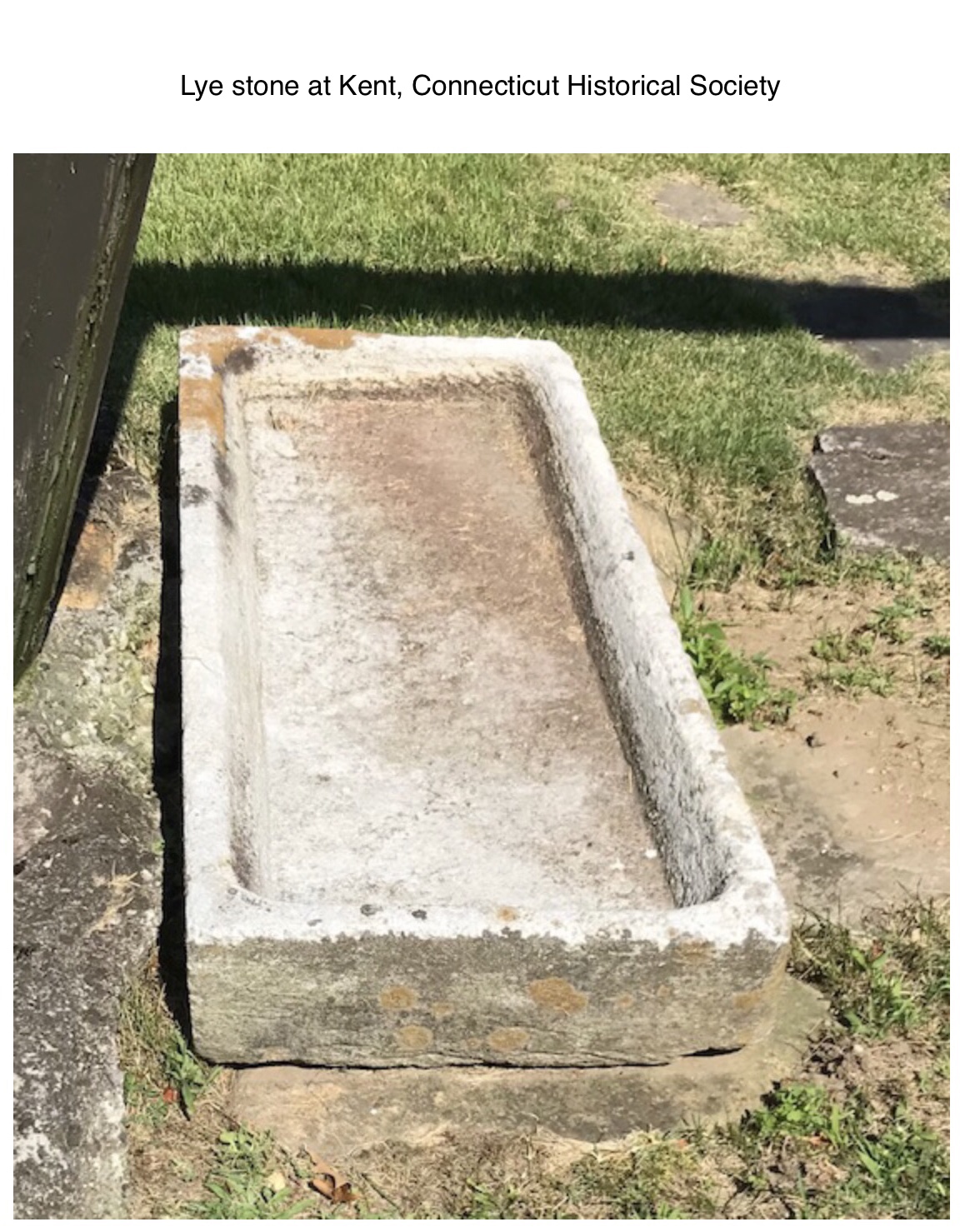
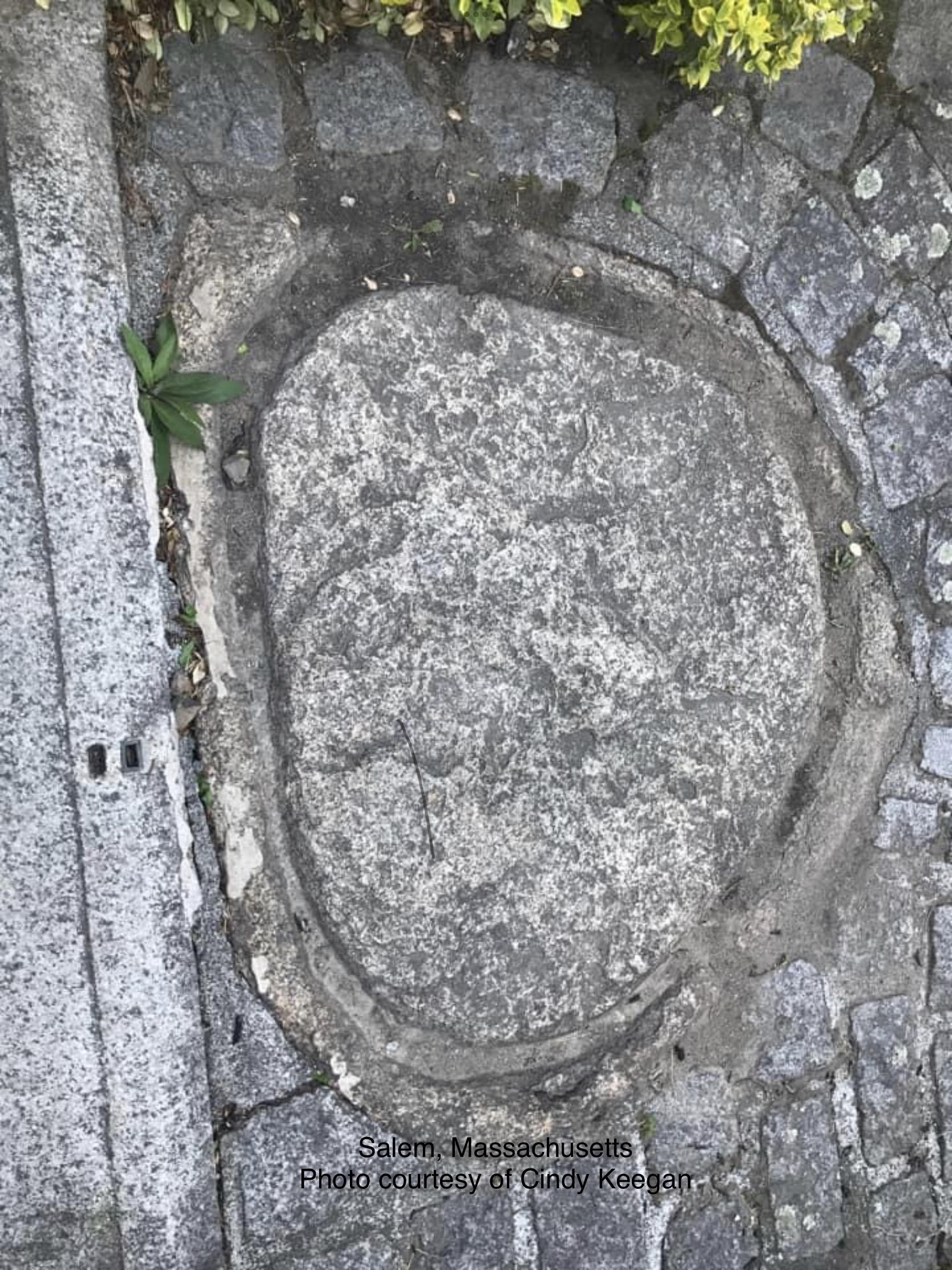
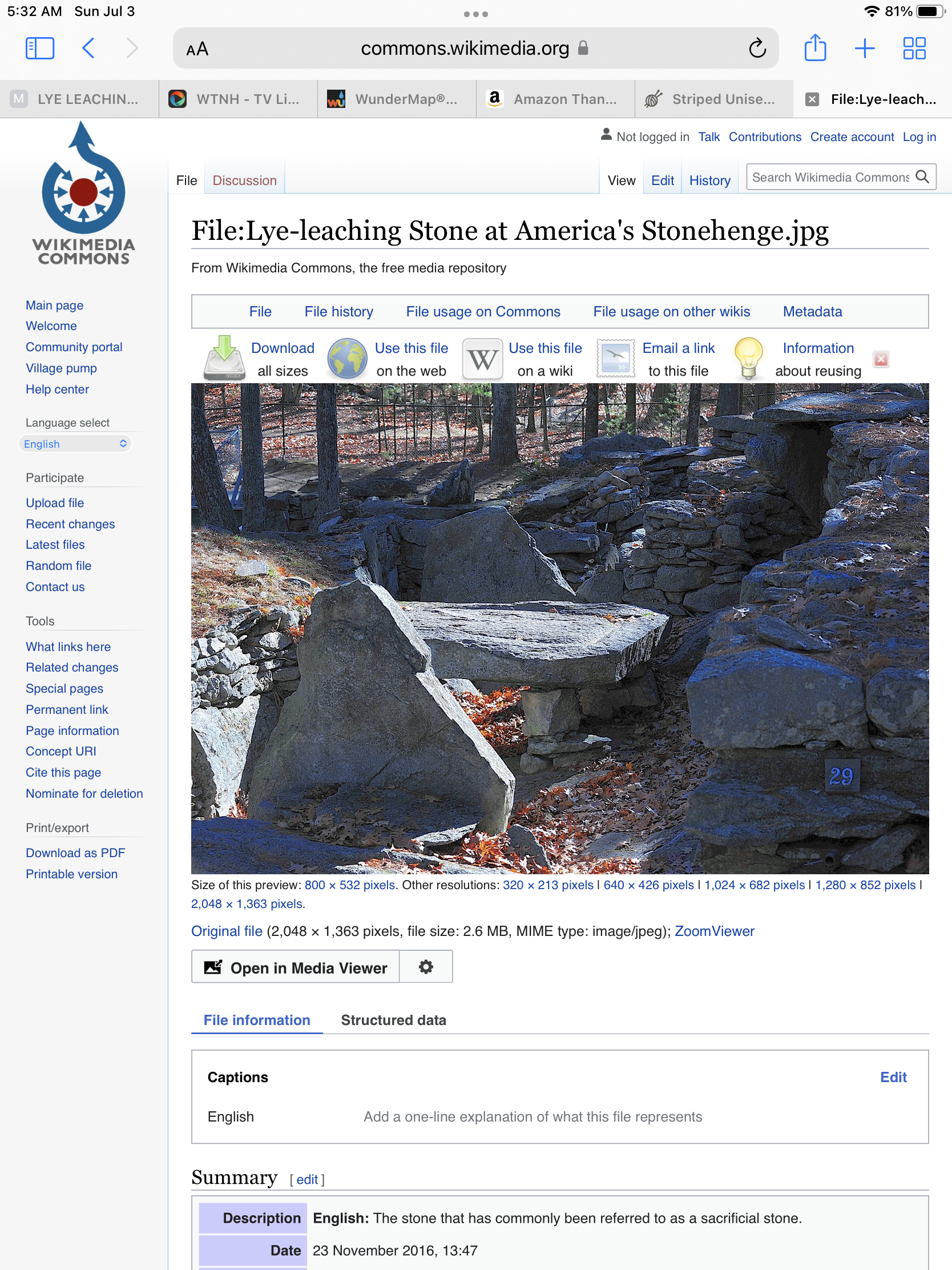
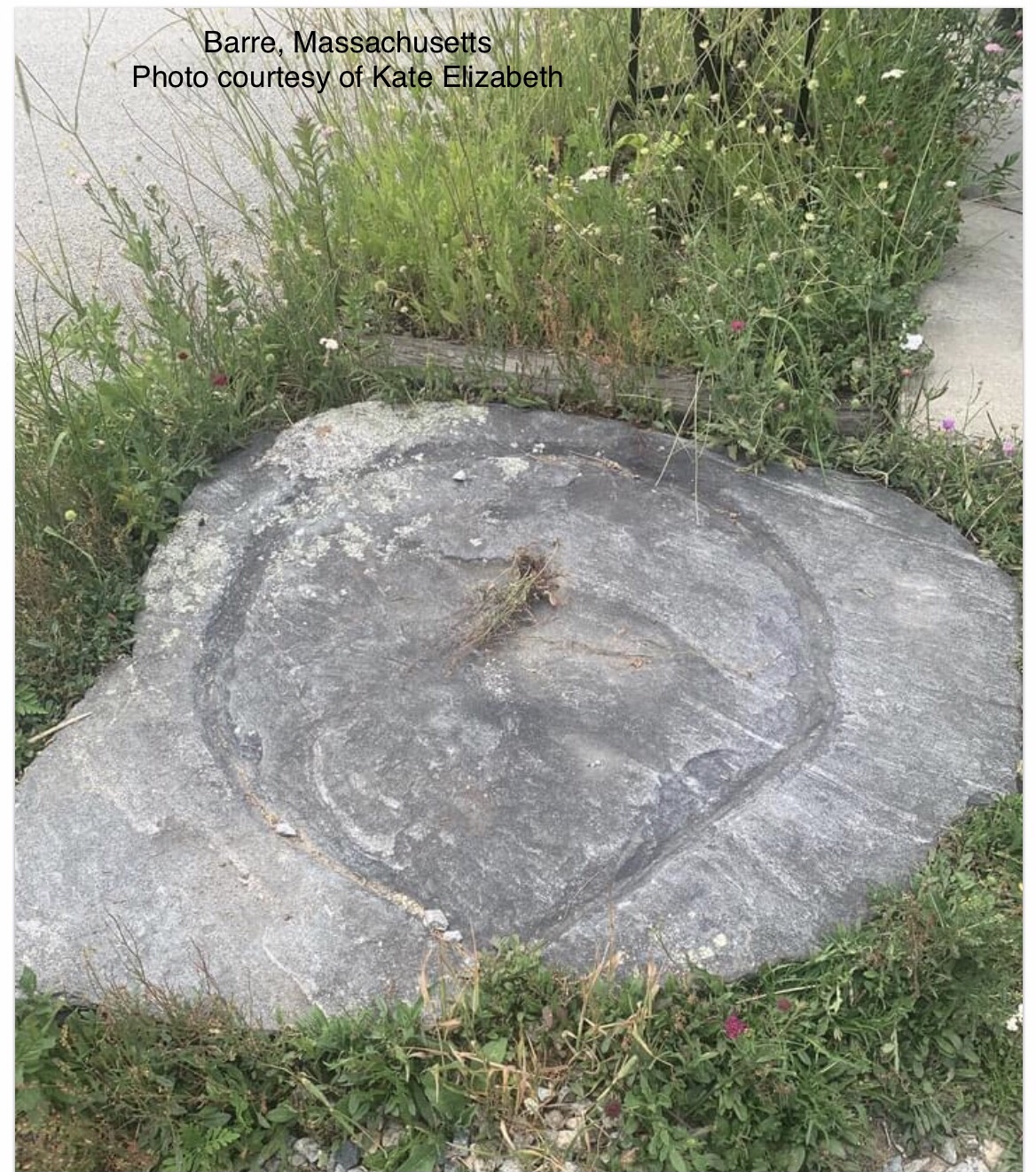
Mansfield
Historical Society Illustration
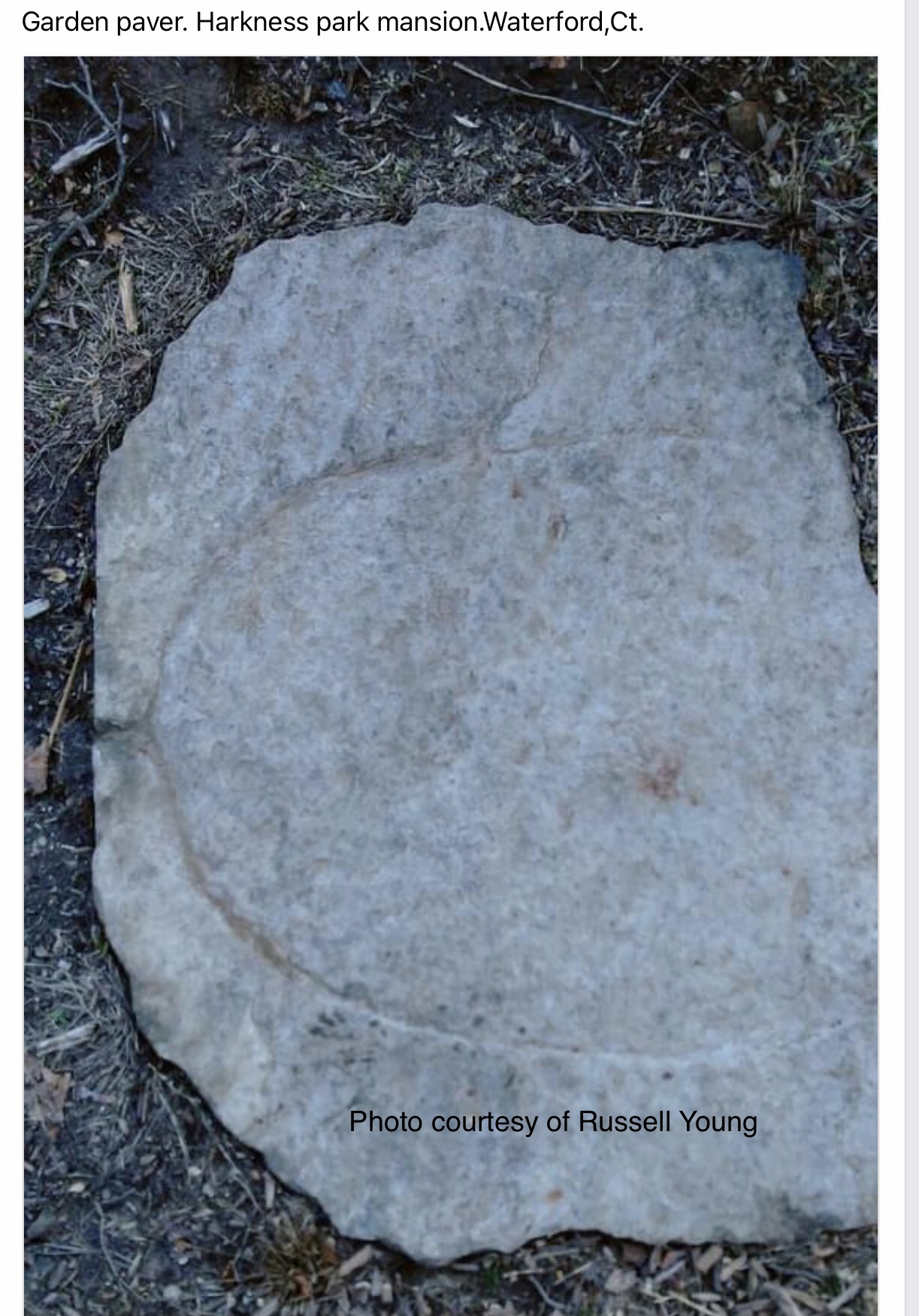
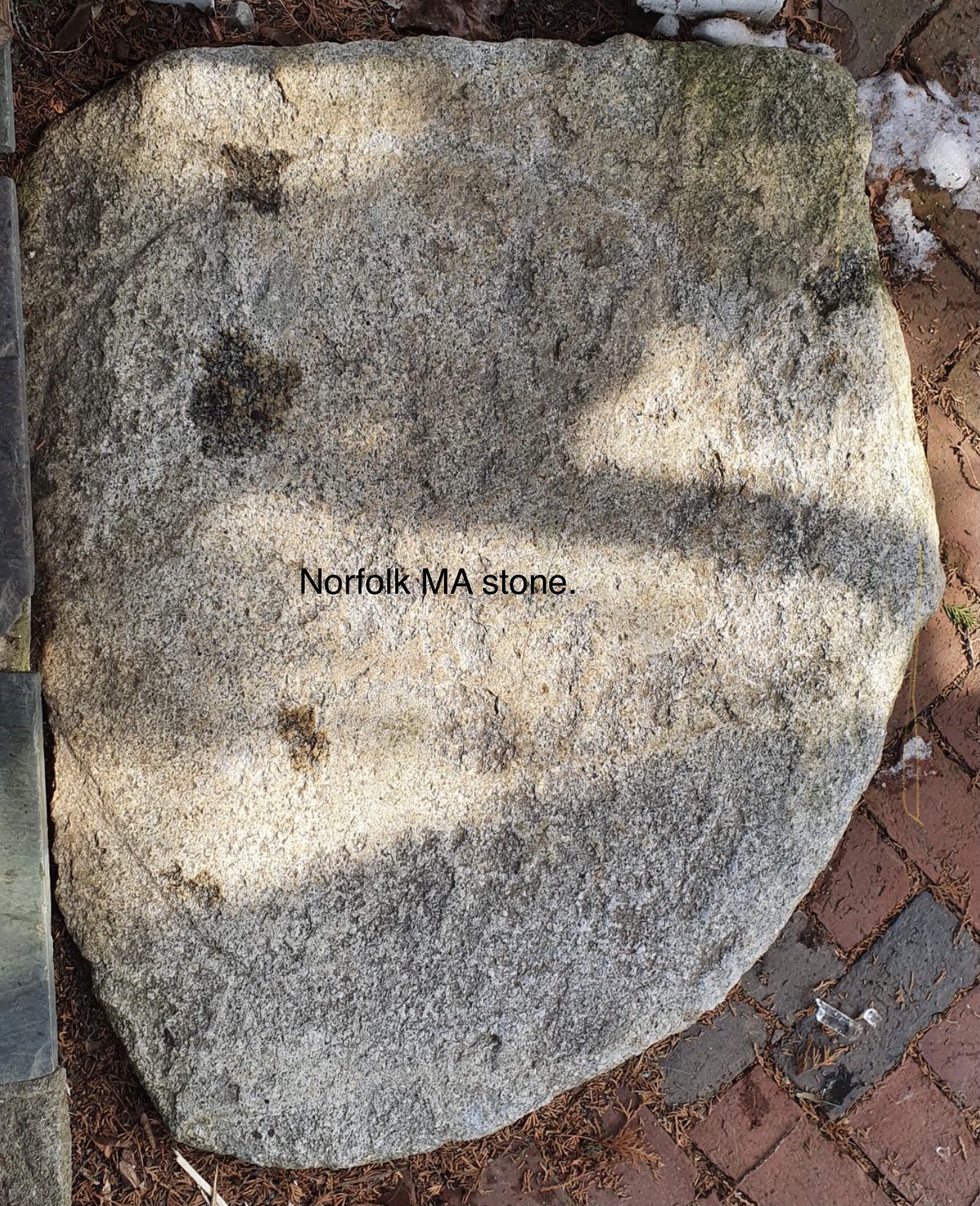
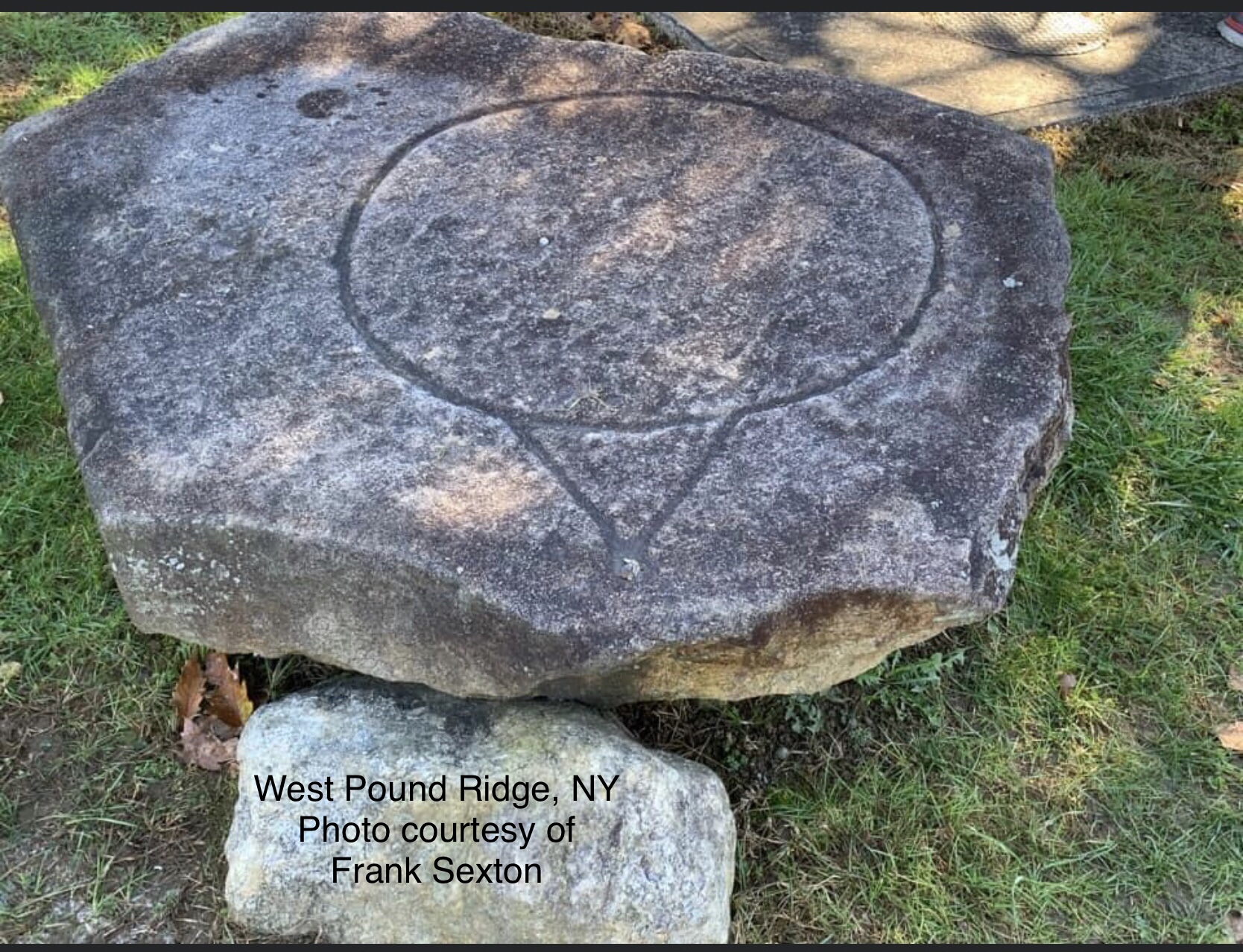
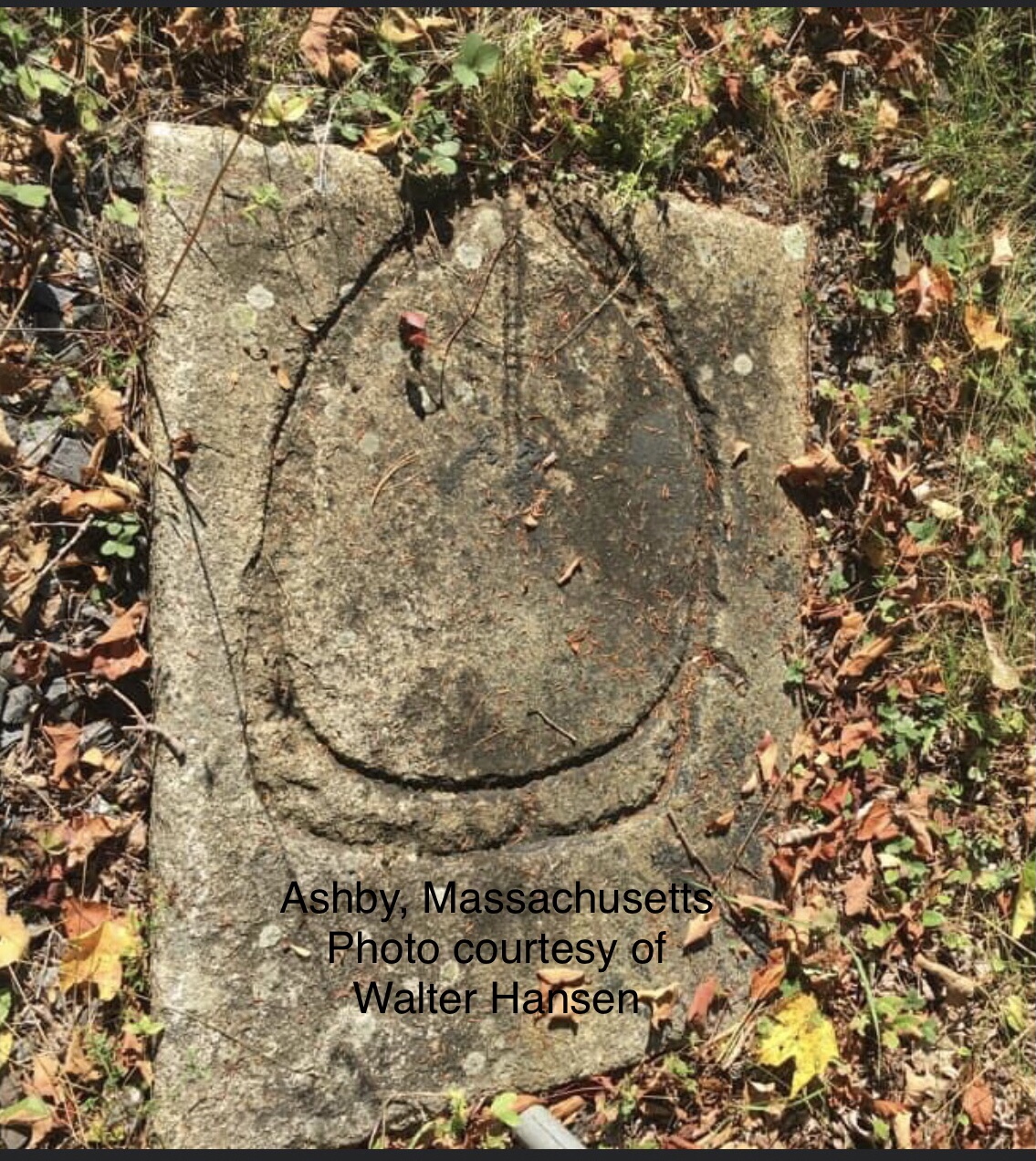

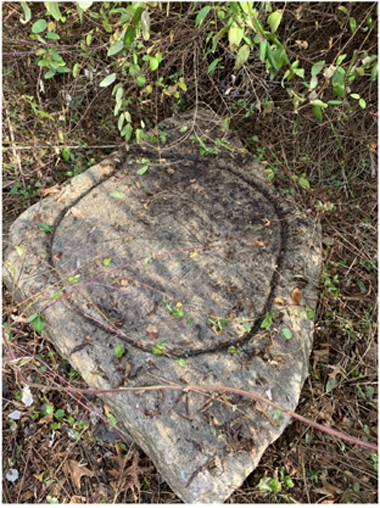
Groton CT
Photo courtesy of Jim Diaz
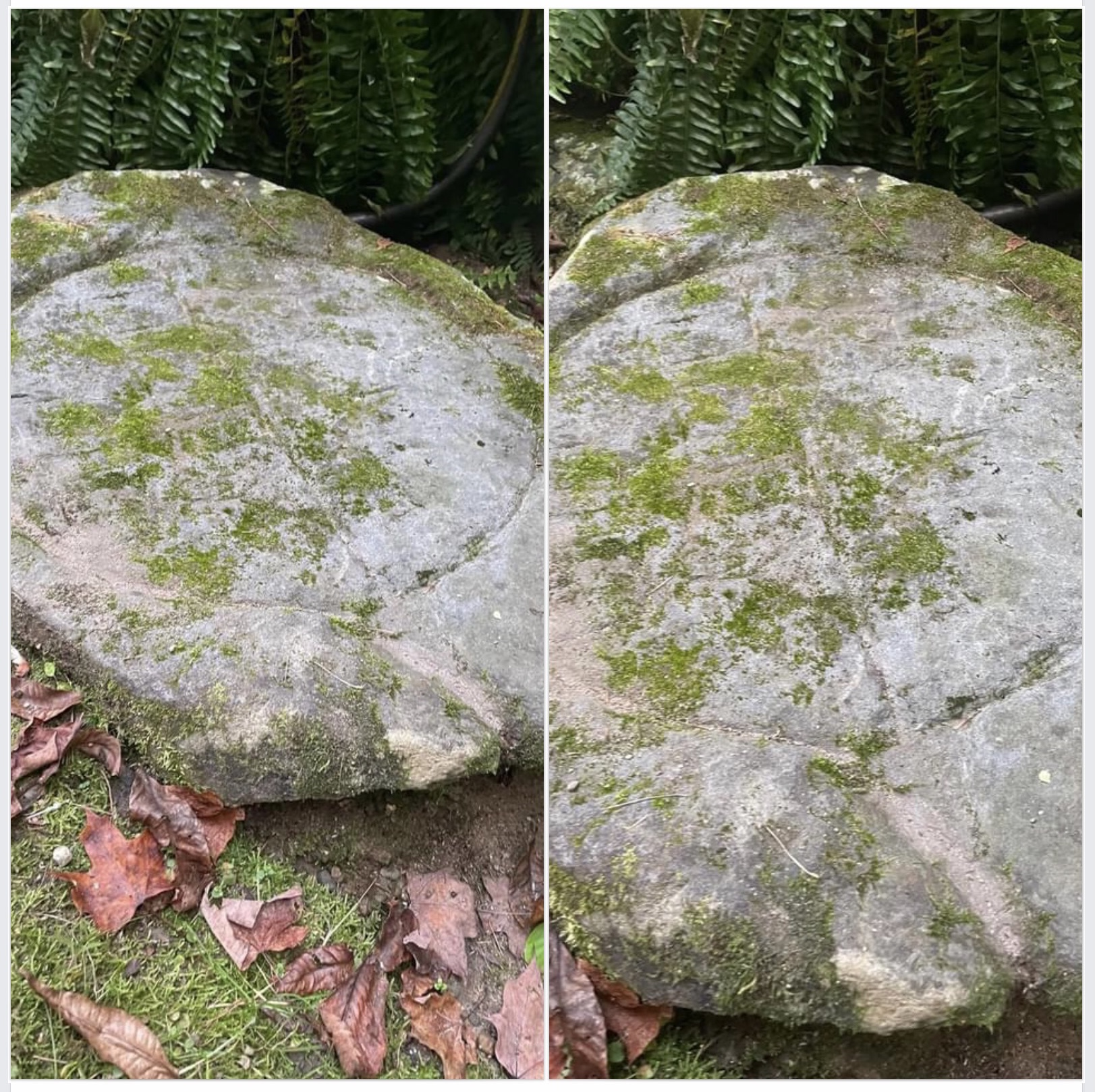
This stone is in Easton MA
Photo by Kristen Evans
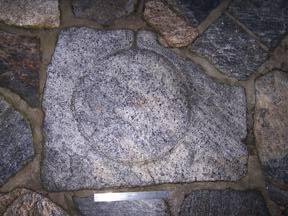
The Groton stone.
Photo by Kristy Holch
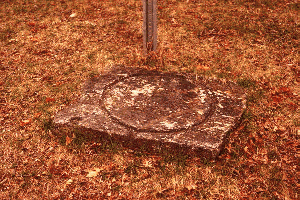
The Barkhamsted Reservoir stone.
Photo by Carol A. Hanny
This stone WAS on the eastern side of Barkhamsted Reservoir. It
has been removed from its original site. I was told it was to
leach lye from wood ashes for soapmaking. A barrel, with holes
drilled in the bottom, was fitted into the round groove. Ashes
would be placed in the barrel, water poured on top, and the lye
would leach out, and collected in a container by the spout on the
rock.
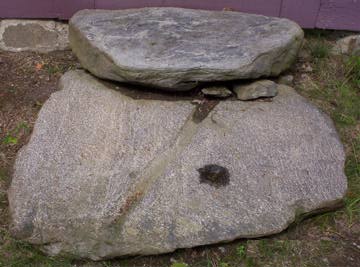
The Samuel Peck stone, Harwinton, Connecticut.
Photo by Carol A. Hanny
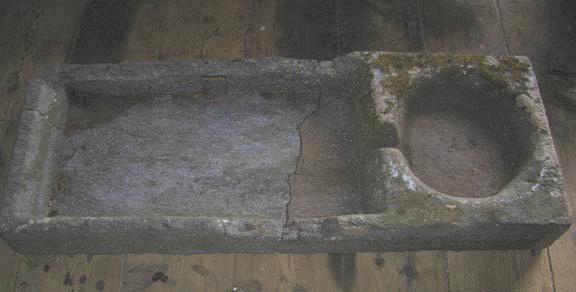
The South Worthington, Massachusetts stone.
Photo courtesy of George Bresnick
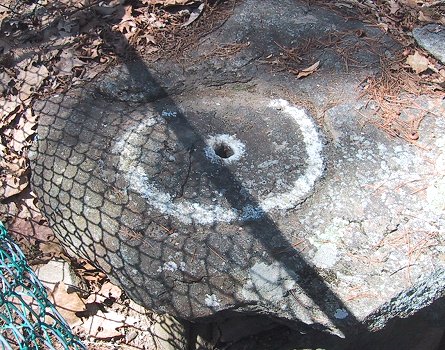
The Mystery Hill Stone.
Photo courtesy of Dave Goudsward
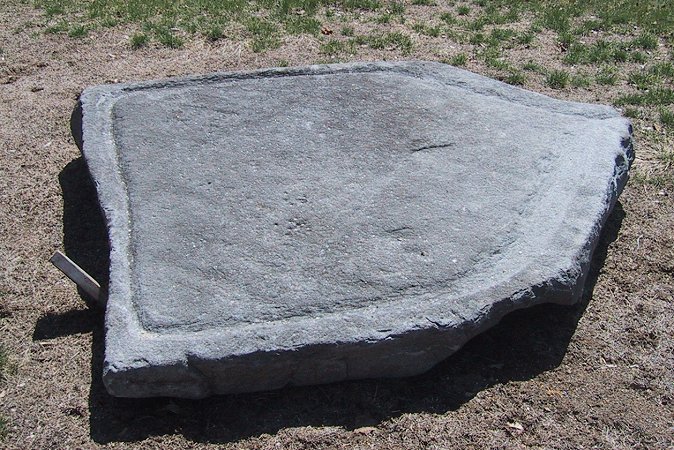
The Leominster, Massachusetts stone.
Photo courtesy of Dave Goudsward
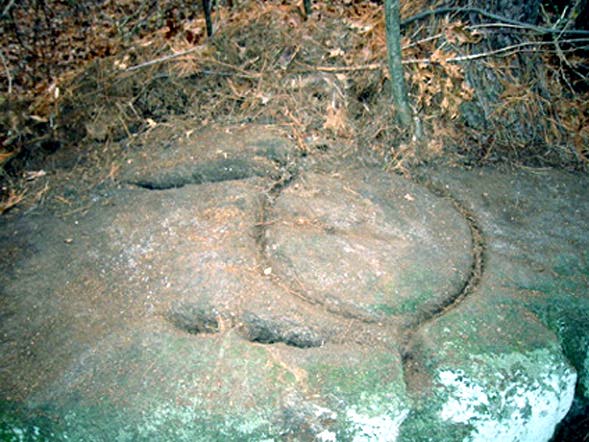
The Westport, Massachusetts stone.
Photo courtesy of Anne Baker
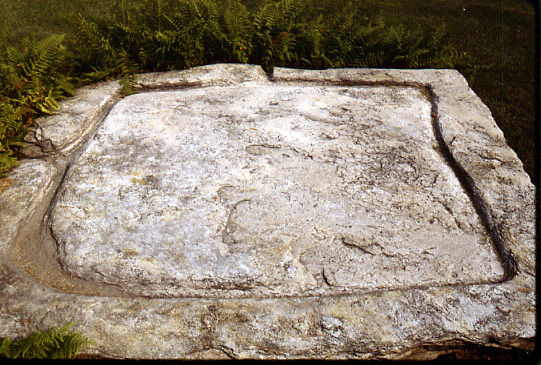
The South Hadley Massachusetts stone.
Photo courtesy of Ken Feder
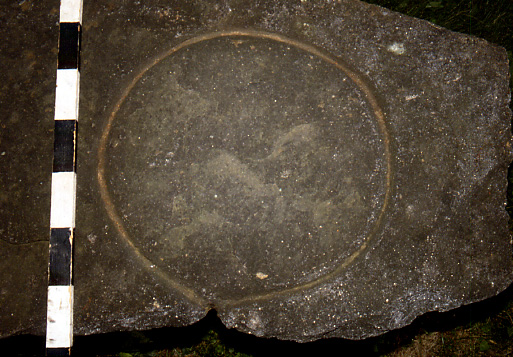
The East Hartland stone.
Photo courtesy of Ken Feder
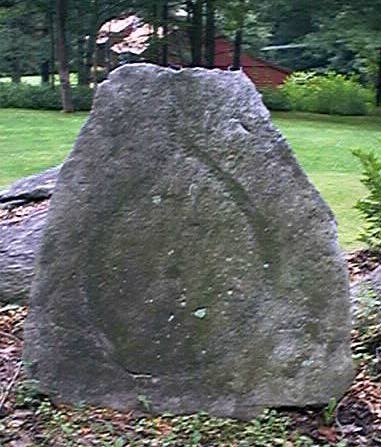
The West Hill stone.
Photo by Carol A. Hanny
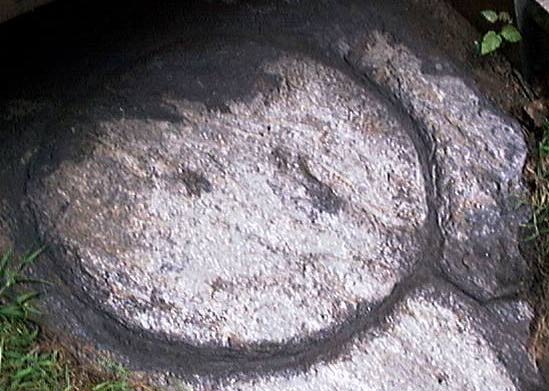
The Bakerville stone.
Photo by Carol A. Hanny
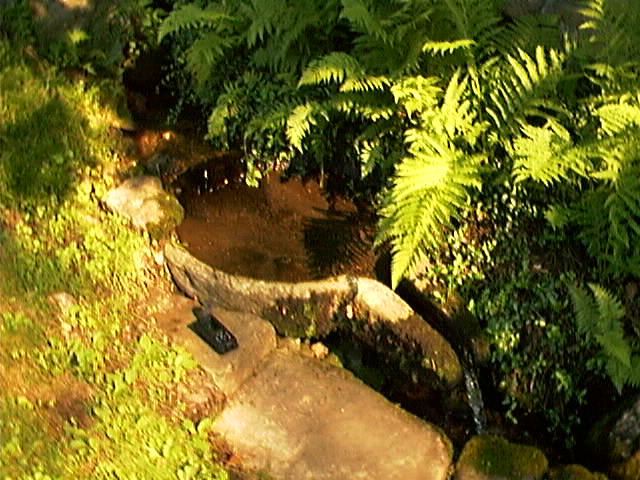
The Cornwall Hollow stone.
Photo by Carol A. Hanny
The following are circle and line petroglyphs from North
Carolina, courtesy of Tom Charles.
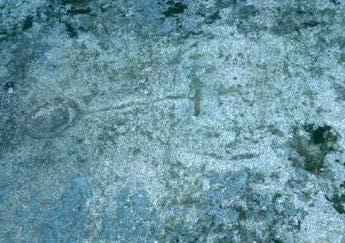
Anderson County, North Carolina
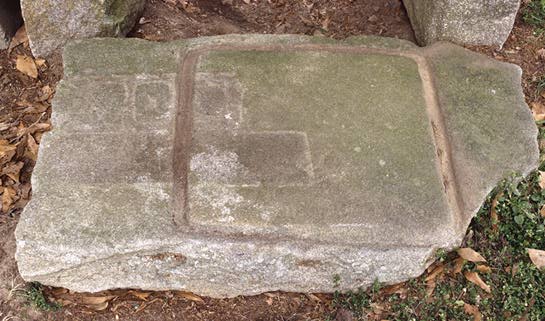
Grape Juice Extractor Stone
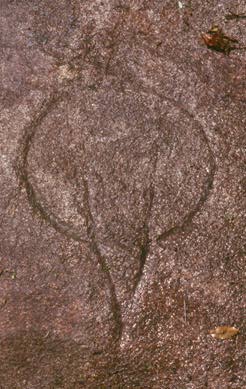
Greenville County, North Carolina
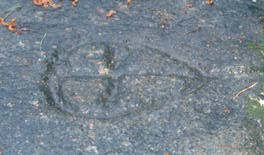
Oconee County, North Carolina
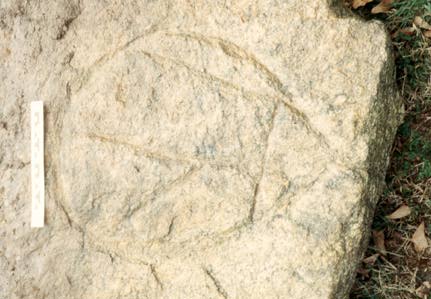
Circle and Line Petroglyph, North Carolina
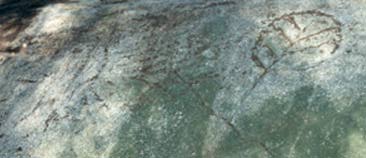
Stallings Circle and Line Petroglyph
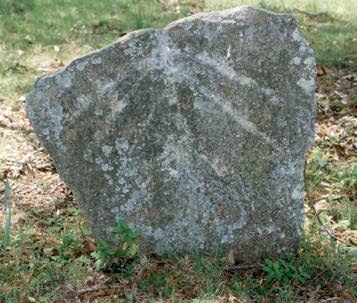
Circle and Line Petroglyph used as a tombstone.
Bibliography
Euro-American Petroglyphs Associated with Pine Tar Kilns and
Lye Leaching Devices in Kentucky by Charles D. Hockensmith,
Tennessee Anthropologist, Vol. XI, No. 2, Fall 1986.
Petroglyphs, Tar Burner Rocks, and Lye Leaching Stones by
James L. Swauger, Pennsylvania Archaeologist, Vol. 51, April 1981,
No. 1-2.
Making Tar by Craig Carlton and Dale Ferguson, in Foxfire 4,
edited by Eliot Wigginton, Anchor Press, Garden City, pp. 252-256.
Soapmaking by Andrea Burrell, in The Foxfire Book, edited by
Eliot Wigginton, Anchor Press, Garden City, pp. 151-158.
Leaching Lye From Wood Ashes, Countryside and Small Stock
Journal, Vol. 82, No. 5. Sept./Oct., 1998. (article first appeared
in Countryside in July, 1971.)
Back to my home page.































